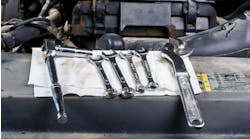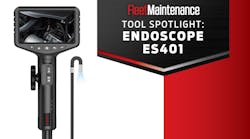It is important for fleets to keep an eye on tires to catch balancing issues early. One of the most noticeable and obvious signs of a tire imbalance issue is vibration felt by the driver.
“That is usually the first giveaway,” says Mike Steiner, customer engineering support referent for Michelin North America. “But of course, you will also get some irregular wear, some cupping wear, that can develop when you have out-of-balance situations.”
Jim Taylor, manager of customer engineering solutions for Goodyear Commercial Tire North America agrees vibration and irregular tire wear are the two most noticeable signs.
“These can be caused by improper mounting for tire and wheel assemblies, issues related to tire and wheel assembly balance and uniformity, or the mechanical condition of axle end components like studs, fasteners, hubs, bearings, or steering and suspension parts,” Taylor says.
“If the driver senses intermittent vibrations that come and go at certain speeds, this may indicate an assembly uniformity issue,” he adds. “Vibrations felt consistently, particularly while speed increases, may indicate an assembly balance issue.”
Signs of tire balancing issues vary slightly depending on the position of the tire.
“Typically, for a steer tire, when a balance issue forms, you’ll see cupping or scalloping [wavy wear] on the shoulder ribs,” says Phil Mosier, manager of commercial tire development at Cooper Tires. Over time, that can progress to the intermediate ribs, he notes.
For drive tires, the tell-tale sign of a balance issue is excessive shoulder wear, Mosier says.
“And on the trailer position, if you see diagonal or localized wear spreading from the shoulder across the tread, then you have a balance issue,” Mosier adds. “You might also see cupping or scallop wear on shoulder ribs, which may transfer to the intermediate ribs.”
Excessive wear on one area of tread compared to the tread wear that is 180 degrees from that spot or randomly worn areas around the tire circumference are additional balancing concerns, Mosier adds.
In addition to tire wear, drivers can determine if and where there is a tire imbalance depending on where vibration is coming from.
“Drivers will likely feel vibrations through the steering wheel if there is an issue with the steer position [tires], while vibrations tend to be felt through the back of the driver’s seat or toward the rear of the cab for drive position issues,” Taylor says.



